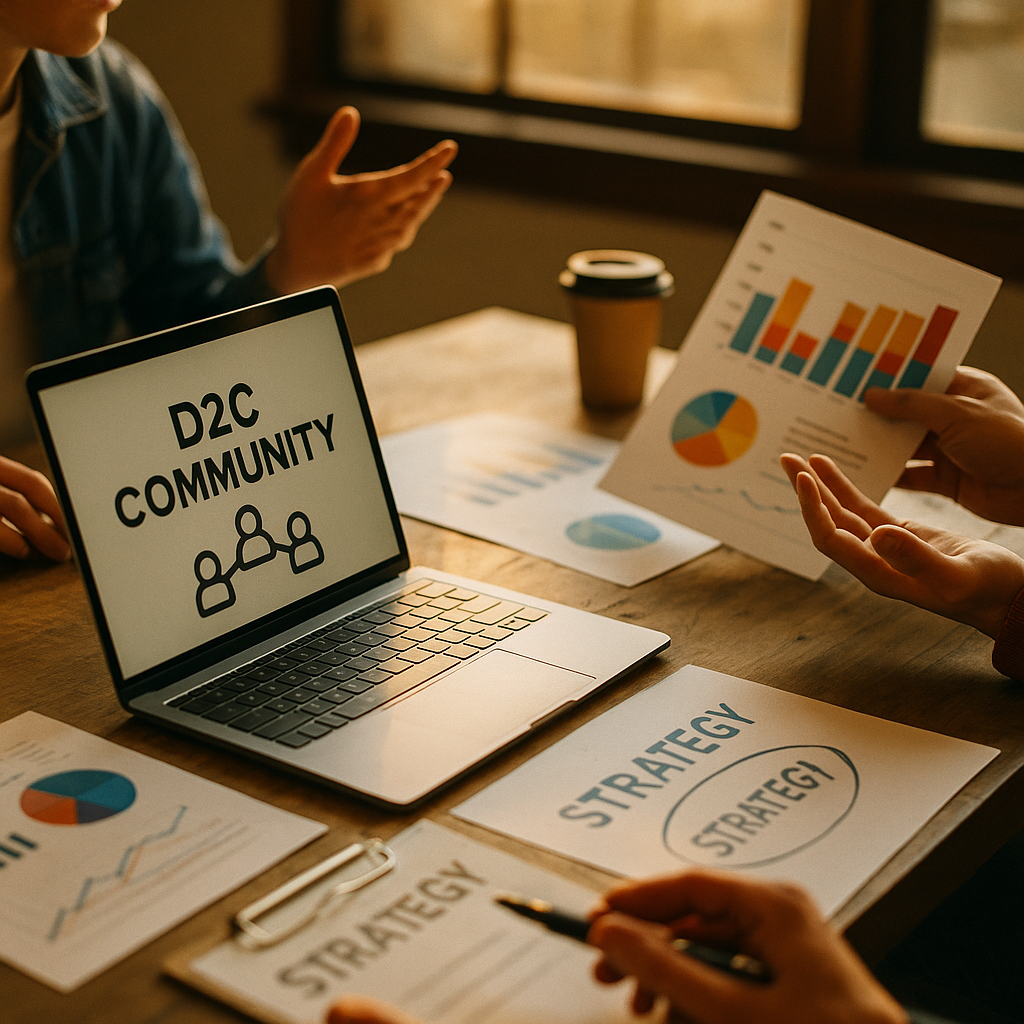Developing a marketing strategy for a D2C brand focused on community building is vital in 2025, as consumers crave authentic connections with the brands they support. By cultivating a passionate community, you can amplify loyalty and word-of-mouth growth. But how do you systematically build this foundation into your business? Let’s explore a proven step-by-step guide.
Understanding the Power of Community in Direct-to-Consumer Marketing
Direct-to-consumer (D2C) brands thrive on meaningful customer relationships. In 2025, consumers are increasingly selective, looking for brands that deliver not only great products but also a sense of belonging. According to a Statista survey, 75% of Gen Z shoppers say they are more likely to support brands that foster communities. Community-driven marketing moves beyond traditional tactics—it turns customers into advocates and creates a feedback-rich environment. This approach builds trust, keeps customer acquisition costs down, and increases lifetime value.
Identifying and Attracting Your Ideal Customer Community
Before you can build a thriving community, you must precisely identify whom you want to attract. Begin by developing detailed buyer personas. Analyze your existing customer data for patterns in demographics, behavior, values, and pain points. Tools like Google Analytics 4 and social listening platforms can reveal what motivates your audience. Involve real members of your target market through interviews and surveys for actionable insights. Once you understand your audience, create tailored messaging across your marketing channels, using language and visuals that resonate. Highlight community values in your brand story and campaigns.
- Tip: Use interactive quizzes or polls to refine your understanding of your community’s preferences in real time.
Developing a Community-Focused Content Marketing Strategy
Content is the cornerstone of community building for D2C marketing. Establish yourself as a thought leader and resource hub by producing high-value, actionable content. Consider these effective formats:
- Educational blog posts and how-to guides specific to your product niche
- Interactive forums or private social groups for two-way discussions
- Video tutorials, behind-the-scenes stories, and live Q&A sessions
- User-generated content campaigns, such as photo contests
Encourage members to contribute ideas, feedback, and stories. Feature user contributions in your newsletters and on your website. This collaborative approach not only boosts engagement but also signals that your community’s voice matters. According to Influencer Marketing Hub, UGC (user-generated content) drives 29% higher conversion rates for D2C brands.
Leveraging Social Media and Owned Platforms for Brand Community Engagement
Successful D2C brands leverage both mainstream social platforms and owned online spaces to foster direct engagement. In 2025, platforms like Instagram, TikTok, and Discord remain hotspots for community interaction. Here’s how to maximize their impact:
- Maintain active, authentic dialog—respond to comments, share stories, and host regular AMAs (Ask Me Anything) to humanize your brand.
- Create exclusive experiences—offer early access to new releases, members-only events, or loyalty perks through your community channels.
- Invest in your own channels—private brand forums or ambassador programs reduce reliance on algorithm changes and allow deeper relationships.
For example, leading D2C skincare brands now run 24/7 moderated communities on their own websites, empowering members to share routines and reviews. This level of involvement builds trust and insulates your community from volatile social media trends.
Personalizing Customer Experiences and Community Interactions
Personalization is a hallmark of great D2C marketing strategies. Community data lets you offer tailored product recommendations, targeted offers, and content that aligns with each segment’s interests. In practice:
- Segment your email list by interaction level, preferences, and purchase behavior.
- Use AI-powered tools to recommend relevant content or rewards within your community platform.
- Encourage peer-to-peer connections by matching members with similar interests.
Personalized recognition—such as digital badges or community leader profiles—encourages contributions and accelerates community growth. Salesforce reports that 84% of D2C shoppers in 2025 expect brands to recognize their individual needs and participation.
Measuring Success and Scaling Your D2C Community Marketing Strategy
To ensure your marketing strategy for a D2C brand focused on community building is effective, establish clear KPIs. Key metrics include:
- Community growth rate and member retention
- Engagement per post (comments, shares, reactions)
- Referral rate and user-generated content submissions
- Net promoter score (NPS) specific to your brand community’s sentiment
- Conversion rate from community members versus non-members
Regularly review your analytics dashboards and seek direct feedback. Experiment with new content formats and real-life meetups to keep your approach fresh. As your community expands, designate leaders or ambassadors to sustain energy and encourage peer moderation.
By combining actionable insights, strategic content, and authentic engagement, you’ll achieve a community-driven D2C brand that outlasts trends. Whether you’re launching or scaling, community remains your most powerful growth asset.
FAQs: Marketing Strategy for a D2C Brand and Community Building
-
What is the primary benefit of community building for D2C brands in 2025?
Community building increases trust, customer lifetime value, and organic growth, reducing reliance on paid advertising. -
How do I choose the best platform for my customer community?
Consider where your audience spends time and the level of engagement you want—social media for visibility, or owned forums for deeper connection. -
How can I encourage user-generated content for my D2C brand?
Run themed contests, feature customer stories on your platforms, and reward contributions with recognition or exclusive perks. -
What metrics should I track to measure community marketing success?
Track engagement, community growth, retention, referral rates, user-generated content submissions, and conversion rates from community members. -
How soon can I expect to see results from a community-building strategy?
Results depend on your consistency, but many D2C brands begin seeing meaningful engagement within three to six months.
In conclusion, crafting a marketing strategy for a D2C brand focused on community building delivers sustainable, long-term business benefits. Engage your audience meaningfully, measure progress, and adapt as your community grows. Let your customers be your strongest advocates as you future-proof your brand.
